CCM-Charged Contour Model
CCM is a new deformable model based on electrostatics and geometric contour propagation. It is motivated by electrostatic interaction between charges, and simulates the movements of a set of connected charged particles in an attracting electrostatic force field, which plays the role of external force in this deformable model. CCM detects object boundaries with a charged active contour that propagates under the influence of Lorentz forces in an image-based electrostatic field. We make use of level set representation allowing topological changes to be handled naturally. Also, we build on the centre of divergence concept towards automatic initialisation. CCM improves on both traditional Geodesic snake and the recently introduced Charged Particle Model (CPM), which is also based on electrostatics, as well as charged particle dynamics.
Automatic Initialisation
 |
| A simple automatic initialisation method for CCM based on the concept of vector field divergence. (From left to right:) parts of the Lorentz force field where divergence is >1(i.e. w1-w5), close-up of w1, the divergence map with brightness proportional to divergence, automatic initialisation (w5 is discarded as it falls into the non-bright category), propagating CCM, and final result. |
Example results - comparative results on real images
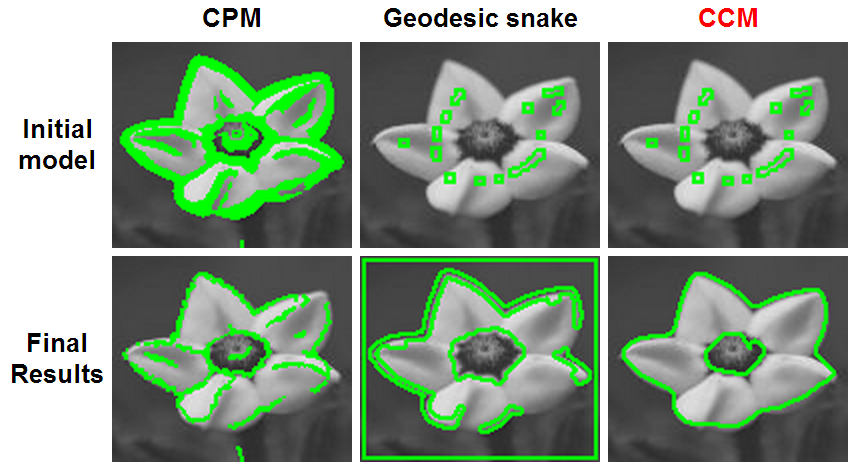 |
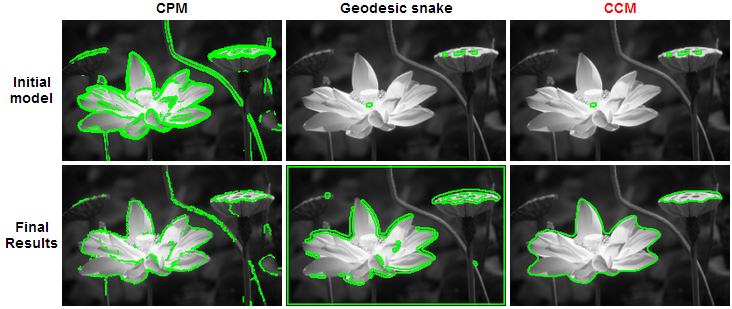 |
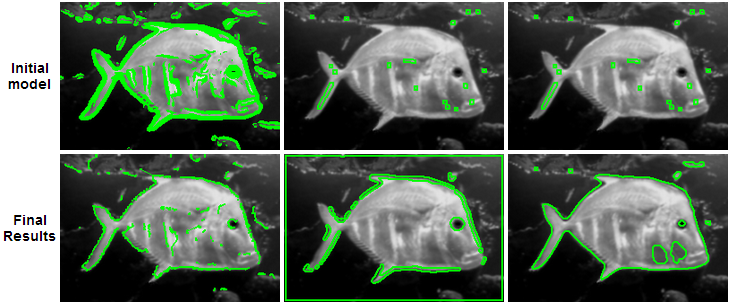 |
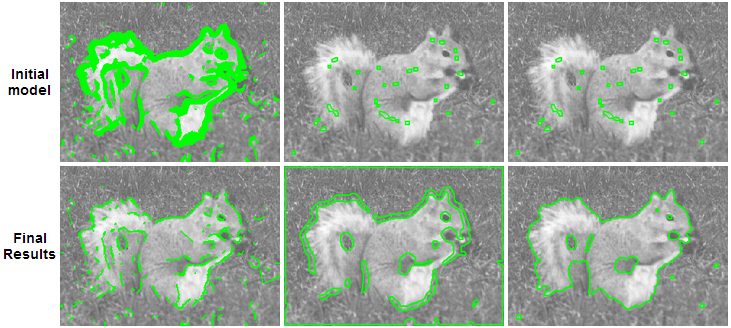 |
| Comparative results of CCM, CPM and geodesic snake on real images. CPM fails to recover objects with weak edges, as partilces arriving at weak edges will be pushed away along the boundaries towards stronger edges nearby. Geodesic snake also suffers from the problem of edge leakage. While CCM benefits from both active contour and the electrostatic force field and improves on both models. Note that for CPM we use single-scale setting and initialization by edge map thresholding. Delaunay triangulation of Voronoi diagram is used for curve reconstruction from the scattered particles. |
| CPM | Geodesic Snake | CCM |
 | 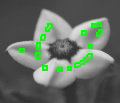 | 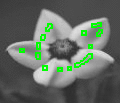 |
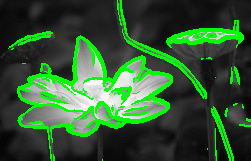 | 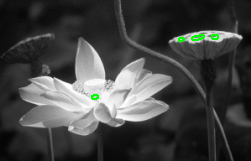 |  |
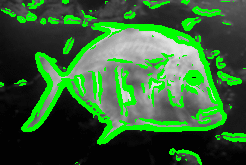 | 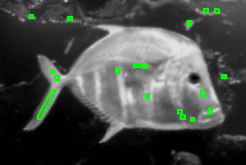 | 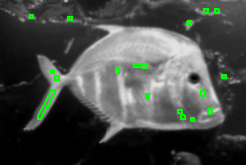 |
 | 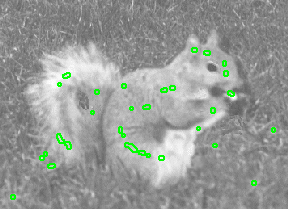 | 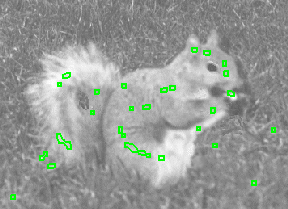 |
| Animation results. |
Example results - cardiac SPECT segmentation
| Mid-slice at 1st time frame from 7 different patients | Groundtruth | CPM | Geodesic Snake | CCM |
 |  |  |  |  |
 |  |  |  |  |
 |  |  |  |  |
 |  |  |  |  |
 |  |  |  |  |
 |  |  |  |  |
 |  |  |  |  |
Results of CCM, CPM and geodesic snake on 64x64 pixel cardiac SPECT data of 20 individual patients, with 8 time frames per cardiac cycle. The low resolution and largely diffused edges of the data impose a great burden on boundary detection. CPM fails to recover most of the fuzzy edges because particles arriving at weak edges will carry on moving towards stronger edges along the boundarie and leaves weak edges open. Geodesic snake also fails on the detection due to edge leakage. In comparison, CCM produces much better results as the contour propagates along its normal and the bi-directional vector field enable the contour to stabilise in the face of weaker edges.
Publications
- Ronghua Yang and Majid Mirmehdi, A Charged Geometric Model for Active Contours, In Proceedings of the 18th International Conference on Pattern Recognition, August 2006.
- Ronghua Yang, Majid Mirmehdi and David Hall, A charged Contour Model for Cardiac SPECT Segmentation, In Proceedings of the 16th Conference on Medical Image Understanding and Analysis, July 2006.
